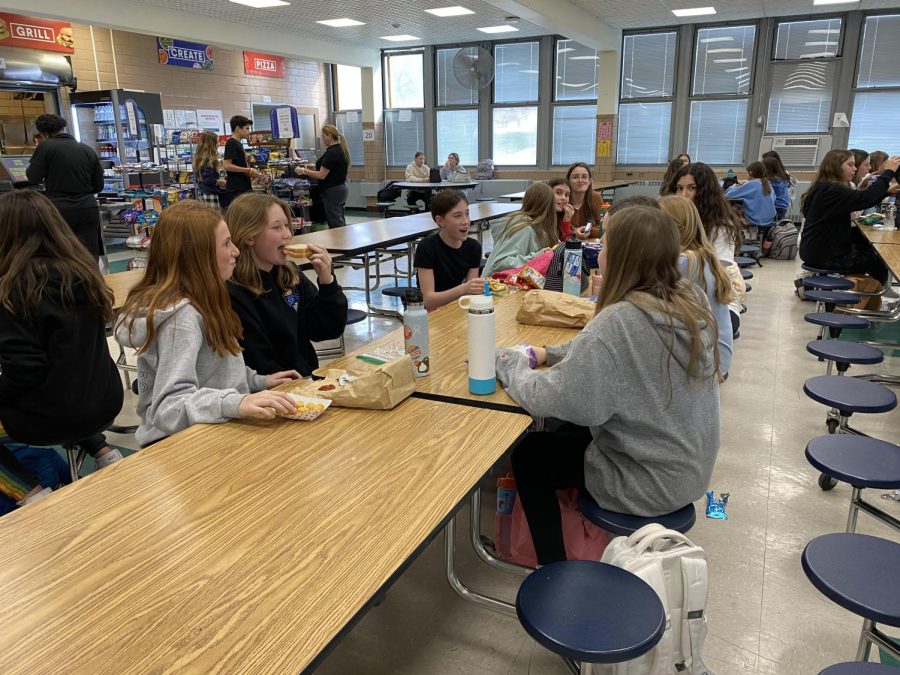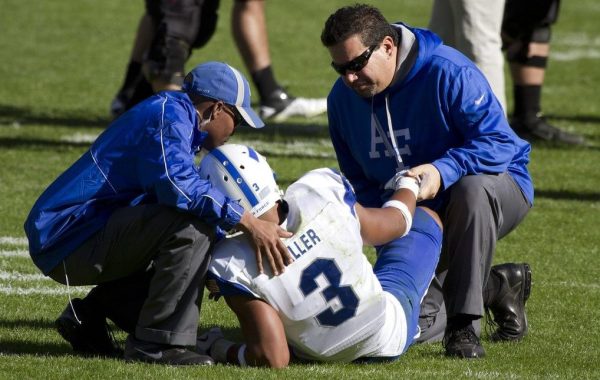20/20 lunch schedule causes controversy
Now that the pandemic has come to an end, Edison Intermediate School runs a 20/20 lunch. This means groups splitting grades up with half the grade going to the cafeteria to eat lunch for 20 minutes, while the other half of the grade remains in lunch study or goes outside for recess.
EIS principal Dr. Matthew Bolton explained why the lunch structure was changed: “One of the reasons for the change was the fact that kids didn’t feel comfortable eating in the cafeteria because it was so loud. Outdoor recess was also very chaotic, so all of those issues really outweigh students’ argument that they want to see all their friends.”
The debate between friends and control has bubbled to the surface of Edison Intermediate School. The lunch schedule has caused many disagreements between Edison students and staff because of opposing viewpoints. Some people believe that this lunch arrangement is inconvenient and unfair. However, there are positive outcomes, such as helping the school environment and supervision and safety for students.
Many Edison school staff support the 20/20 lunch schedule. They believe that the schedule helps simplify supervision of students in the cafeteria and outside. Seventh grade Social Studies teacher Jacqueline Messinger announced, “I think there are some students who want to socialize, and they are those who just want to eat and be alone. But from my perspective, I like it better when only half the seventh grade is in the cafeteria because it gets loud with everyone in there. However, I recognize the feelings of the students, and I recognize the organization and unity involved in lunch.”
Despite positive reviews from teachers, 20/20 lunch schedules could cause students to have worse days because of stress that they can’t relieve. Studies have shown that being able to eat with friends or family is better for kids because it helps them handle the stresses of daily life and the hassles of day-to-day existence. “Dinnertime is a time of respite from the hustle-bustle of everyday life. Your family can review the day that’s passed and plan for the day that’s coming”(Stanford Medicine).
In addition, 20/20 lunches could affect socialization with the students in EIS. “The lunch schedule is not good because I barely get to eat with my friends,” commented sixth grader Sophie Meyer.
Furthermore, splitting up the classes affects people who are excited for lunch to see their friends. Therefore, banning our old schedule may have affected the organization, but this new one is hurting the students. Seventh grader Anish Iyer was asked how he feels about having different time schedules than his friends, and he responded; “I feel that it’s sad because I only get to eat with one friend and not with all.”
Some students claim it is annoying not having the opportunity to eat with their friends when some don’t get to see them in classes during the school day. Eighth grade student Jaime Clark gave her opinion on how the 20/20 lunches have affected her interactions with her friends. “Half of the time I don’t get to eat with my friends and I don’t have classes with them.”
However, the lunch schedule prevents the loud and chaotic environment teachers informed us about that was problematic when the whole grade ate at the same time. “We just need to know where everyone is, and we are responsible for every student in the building. We don’t have a big enough space right now that enables a safe full grade lunch,” explained eighth grade Language Arts teacher Mrs. Kimberly Swenson.
Another problem that some students face is that they don’t have enough time to eat during the 20 minute time slot if they are buying lunch and have to wait in line for food. Seventh grade student Mirabelle Duguid said, “It’s better for students if the whole grade eats together because they can choose who they eat with and how long they can eat for.”
In conclusion, although teachers have remarked that the current lunch schedule was enacted because of the noise and mess, research shows that eating with friends improves social and communicative skills and improves your mood “There really is a reason that humans have been sharing communal meals together since time immemorial. When we eat together, our so-called ‘animal brains’ receive the message that we are safe and happy, and our bodies are flooded with positive hormones and emotions. Having a meal with your family and friends is a great way to boost your mood” (Blyth). This shows that a simple lunch table talk can improve our mood throughout the day at school. Hopefully, 20 minutes is enough time to boost those emotions at EIS.







